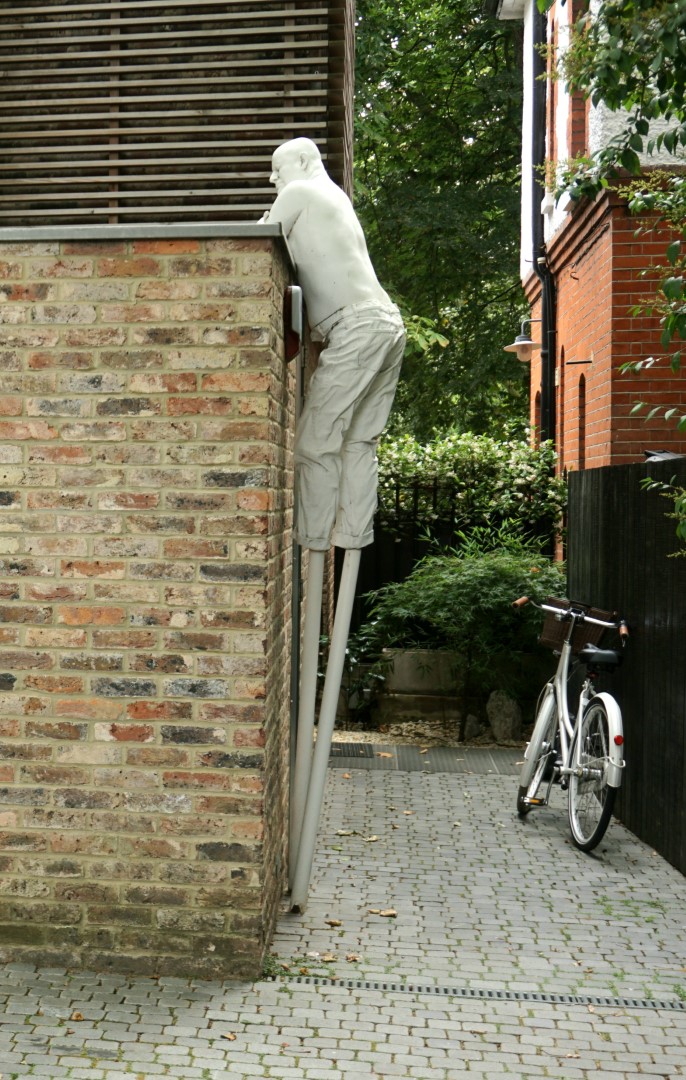This Sunday, in trying to avoid coronavirus-drenched crowds but still wanting to make the most of the British summer, we turned to Stephen Millar’s book, London’s Hidden Walks. We went to Notting Hill. It was an illuminating day.
The origins of the name Notting Hill are uncertain. An early version, Knottynghull, was recorded in 1356. The “gate” comes from the road tollgate that operated between 1769 and 1864.
Outrageously, pig farmers were kicked out of Marble Arch in the nineteenth century; it was connected with some foolhardy retail venture. It would never take off. Central London’s future was, surely, pig farming.
The farmers moved to the area around Pottery Lane in Notting Hill, where potters used heavy clay deposits, naturally occurring in the area, to make bricks and tiles. You can see a rare bottle kiln in Walmer Road.
Meanwhile, the pig farmers were busy breeding around the corner. At one point, pigs outnumbered people three to one. The future seemed bright – and pink.
Many of the streets in Notting Hill bear the name Ladbroke. The Ladbroke family were the main landowner at the time and in 1820 they started to lay out residential streets. The pig farmers were not amused.
Just to prove that entrepreneurs were no less ambitious at the time, someone decided that Notting Hill required “a racing emporium more extensive than Ascot and Epson”. So they built the Hippodrome racecourse, the Ladbrokes being only too willing to lease 200 acres of land for this ill-conceived venture. The land was frequently waterlogged and the horses suffered terrible injuries. No one was surprised when the racecourse shut down. It was replaced by more housing. The pig farmers were livid. They were being squeezed out.
Notting Hill has a lot of musical history. Jimi Hendrix was found unconscious in 1970 at the Samarkand Hotel. He died shortly afterwards. Island Records’ former home is in Basing Street. Bob Marley recorded at the studio and Led Zeppelin recorded the classic, but quite boring, Stairway to Heaven there. Bob Geldof and Midge Ure oversaw the recording session of Do They Know It’s Christmas? in the studio. (Paula Yates, a presenter once married to Bob Geldof, died around the corner in the pretty St Luke’s Mews.)
The curved Romanesque red brick and terracotta façade of The Tabernacle hosted The Rolling Stones, Pink Floyd and The Clash.
Many buildings around Notting Hill have appeared in films. Richard Curtis’ old house featured in the film Notting Hill. He sold it afterwards, probably for a tidy profit buoyed by the film’s popularity. Tourists still come to be photographed at the door. The films Withnail and I, The Italian Job, and Performance have scenes set in Notting Hill.
The most famous place in Notting Hill is Portobello Road. The road, once a winding country path, led to Portobello Farm, which became a convent after it was sold to nuns. In the mid-nineteenth century, local gypsies congregated on the road to trade herbs and horses. This was the basis of the market, which grew as the trading hours were extended in 1927. Portobello Road – originally Porto Bello Lane – was named after Puerto Bellow, a port in the gulf of Mexico that exported treasure to Spain. The British Admiral, Sir Edward Vernon, captured the port in 1739. Many pubs, streets and districts throughout the British empire were named after Vernon and Puerto Bello.
On Portobello Road is the iconic Electric Cinema, which dates back to 1911. Once called The Imperial Playhouse, it was England’s first purpose-built cinema. Now, instead of the current film showing, the cinema defiantly displays, “Dear Virus, you will not kill cinemas”. During WWI, locals stoned the cinema because they suspected the German manager of using the cinema’s lights to direct Zeppelins during bombing raids over London. The serial killer and local resident, John Christie, was a projectionist at the cinema during WWII. He lived at 10 Rillington Place.
Around 1966, the London Free School, a group of idealists who organised events for locals, hosted various social nights. They also helped transform the Notting Hill Carnival from a small-scale celebration in the early 1960s into the massive world-famous event it is today. The carnival originated in the 1950s, when large parts of Notting Hill suffered from social deprivation. The slum landlord Peter Rachman owned a number of properties in the area. Rachman crammed thousands of new immigrants from the West Indies into his slums, using violence and intimidation to exploit them. Many of the West Indians had little choice in an era when it was still common to see signs outside houses warning “no blacks, dogs or Irish”. Racist white Teddy Boys, backed by the fascist British Union, also intimidated immigrants. Racial tensions finally erupted in the Notting Hill Riots, at the time (1958) the worst in living memory. Although the carnival was originally (1959) held in St Pancras Town Hall (now Camden Town Hall), it developed largely as a response to the riots. By 1965, the carnival had moved outside but was still a lot smaller than it is today.
Parts of Notting Hill, such as Powis Square, were once centres for alternative culture. Now, Notting Hill is the location of choice for the rich and famous. There are many lovely gardens. Sadly, very few of them are open to the public. All you can do is peer through the iron railings like ragamuffins glimpsing the promised land.
As we left, heading east, we looked back and saw the remains of Grenfell Tower overlooking Portbello Road, a stark reminder of the disparities of wealth in the affluent inner London borough.

























One thought on “Pigs in Notting Hill”